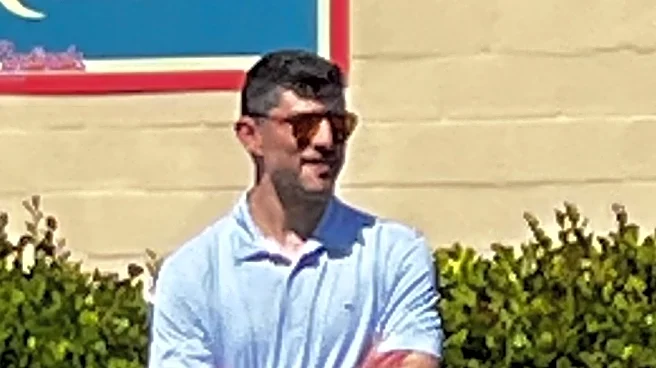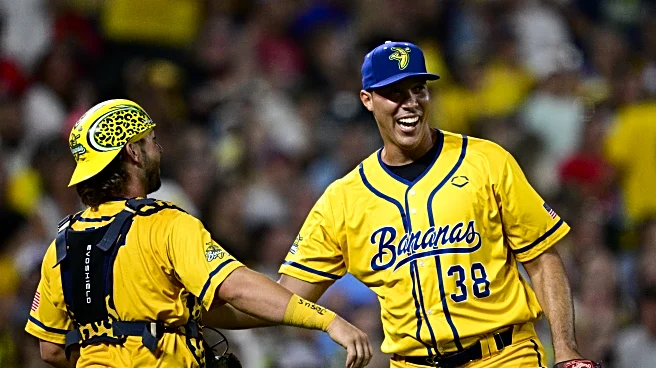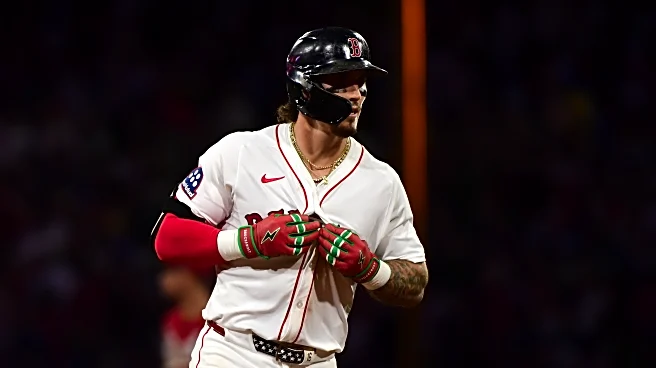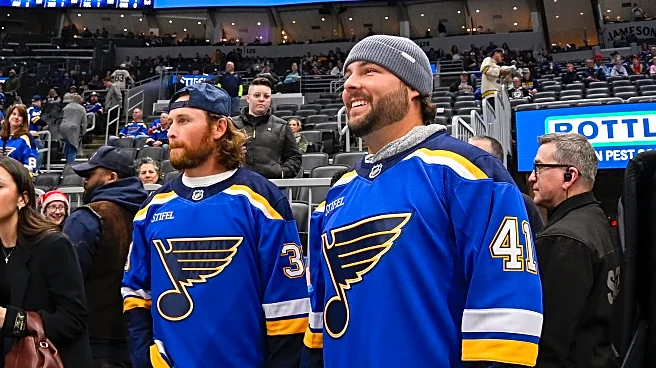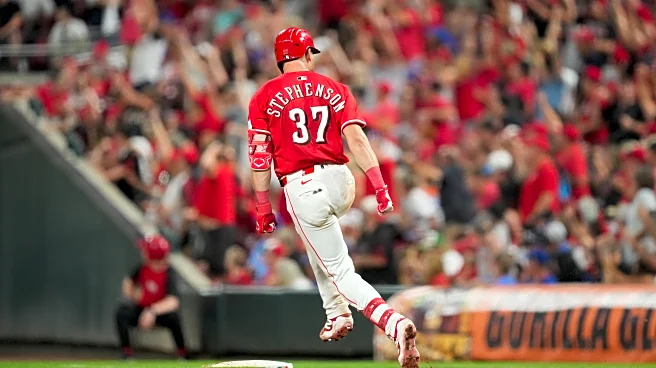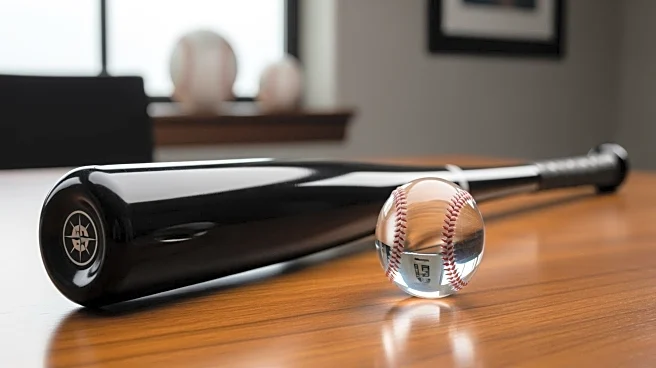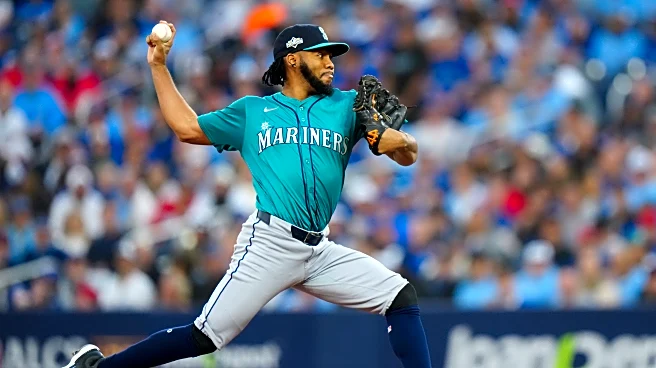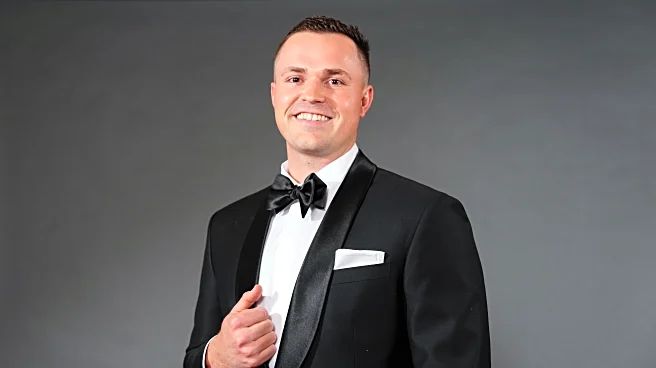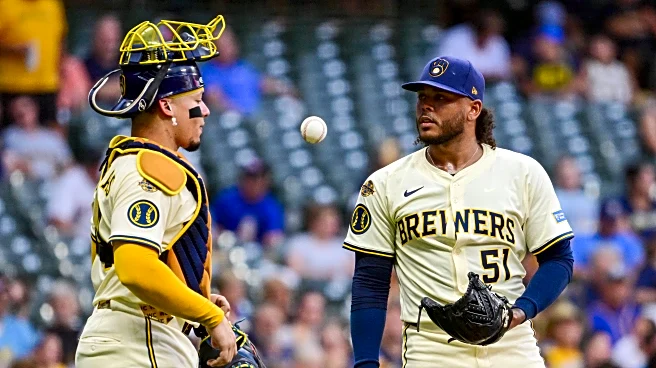The 2025 season is done. It is time to start looking ahead. Hope replaces disappointment. The off-season has not really started yet, although the talking about the off-season is well underway. Lots of people have lots of ideas about how to improve this roster. Of course, the only people who really count in this are Cardinals management, led by new POBO Chaim Bloom. But while we wait for them to act, we can play armchair GM a bit. Not that anyone at VEB would care to do that…
Today, we are going to
play a game I call “40-man Roster Roulette”.
One of the first orders of business in the off-season is to prune and reset the 40-man roster. This will happen in the next week or ten days. In this game, I’ll present the roster and its complexities and try to end up with a balanced 40-man roster. The link to the 2025 season ending roster is here. It is built in Google Sheets. Feel free to open and copy it and play along, changing it any way you like. It’s not as easy as it looks.
There are a couple of rules … not too many, so as not to restrict ideas.
- You have to follow MLB rules. Example: You must decide what to do with Z. Thompson when the 60-day IL disappears after the World Series.
- You can’t go over 40 players any time during the off-season. Plus, you must end up with at least 22 (and preferably 23) pitchers and a matching set of position players. Keep the roster at 40, even if you have to use generic designations (like SP#1). It’s like a card game where you always have 40 cards (pun intended). Add one, discard one.
- Anyone you remove from the 40-man is assumed to be lost. No creative solutions like DFA Prieto now and re-sign him after Spring Training starts and 40-man spots open as injured pitchers find their way back to the 60-day IL.
- You must retain roster balance (22-24 pitchers, 16-18 players).
- You are not allowed to place players in the IL-60 until after the start of Spring Training (Robberse, Hjerpe, Roby).
- You are allowed to define external acquisitions generically by position… SP#1, OF#1, RP#1, so you don’t have to propose actual trades or FA signings.
Below, I present one scenario. A lot of the choices I made were more for the fun of having the hot-stove discussion, but I am trying to guess a bit how the new regime will make decisions.
First things first
I started with the 2025 closing roster. Shown below. The Cardinals started 2025 with a ~$142m payroll. They’ve whittled that down to ~$117m by season’s end. I have no idea what the 2026 payroll budget will be. Sounds like Bloom doesn’t either.

The gimme’s came first. I took Mikolas off and rolled Thompson into his spot as the IL-60 list disappears. This was a paperwork move in the end, because there are some traps already. So much for a gimme.
Thompson is unable to throw. Word is his lat tear reported in spring was masking a labrum tear. Not sure how good that word is, but it seems consistent with the outcomes we’ve seen. He is 28 years old and he is accumulating MLB service time (and pay) to not pitch. I can’t feature him being protected and another younger (and healthier) pitcher being let go. So, he is the first to come off in my exercise.
I also remove Alcala. He is arb eligible, and I can’t see the Cardinals going there with a pitcher of his performance level. Thompson and Alcala will be the spots I leave to fill with cheap Free Agents (SP#6, RP#1) during the off-season. They could leave both on for now, but you can see where that would likely be temporary.
Protecting from Rule V Draft…
The Rule V roster must be submitted by Nov. 14. I looked through the list of position players and pitchers that need protection from that draft. Bernal, Baez, Mendoza and Torres seem to top the list on the player side. Hansen, Mautz, Hjerpe, Santos and Rincon top the list on the pitcher side. You might see another player or two (Rajcic anyone?). If you play along, feel free to add them.
I figure they will add Bernal and remove Pozo. I figured they would add Baez and remove Prieto, although I am less sure about Prieto. Koperniak and/or Siani might be candidates as well, depending on whether they want the extra infielder or the extra outfielder for depth. I decided they’d be more comfortable with their infield depth without Prieto. After some back-and-forth, I decided to replace Siani with Torres. Torres can play an infield position, be emergency catcher and he can hit, so he is not as redundant as Siani is with Church and Scott. All told, I figure out of Siani, Koperniak and Torres, 1 stays and 2 go. Hard to say which one. At the next stage, we find out that all this handwringing is moot, anyway. This isn’t an easy game! And I haven’t even gotten to the hard part yet.
Moving on to the pitchers, I figure they will not protect Santos or Rincon, both injured. In Rincon’s case, I imagine they will gamble he’ll not get picked in the Rule V draft as he has barely pitched at AA. Instead, they can put him on the AAA reserve list and that would force a drafting team to carry him on their MLB roster for an entire year to make drafting him less palatable. Maybe Santos, too.
I expect them to add Hansen and Mautz, both lefties and drop Munoz and Koperniak, rebalancing the roster with another pitcher (getting back to 22) and one less position player (down to 18). This is not where they will want to end up. Note two lefties come on, making the Thompson drop more palatable. Last, I figured they will protect Love and let Veneziano go. Love has draft pick pedigree and had a good year.
One injured pitcher I could not figure is Hjerpe. They like his skill set, but I don’t see how they can carry a third injured pitcher on the 40-man (along with Roby, Robberse). It is possible they could let Robberse go and add Hjerpe. This decision will rest on medicals, which I have no access to. This is a head scratcher to me. They could also add Hjerpe and drop Raquet, but they are going to need arms for the MLB roster and all these injured guys reduces their flexibility to do that. To me, to keep Hjerpe, they have to drop a position player and keep 23 pitchers on the roster. Which position player would go? Now things get tough. Probably ends up being a Hjerpe vs. Torres, 22 pitchers vs. 23 pitchers choice. I figure they keep Hjerpe and look to add a journeyman utility guy (shown as OF#5) as depth in spring, after they move Hjerpe to the IL.
I did not know what to do with Blaze Jordan, recently acquired for Steven Matz. A 40 FV player struggling (a bit) at AAA who is Rule V eligible is a candidate to be left off. He is on the younger side (22), though and SSS alert on those AAA numbers. The FO saw enough in him to take him in trade, so there is something there I can’t measure. Looking at the position players in the list below, who would you jettison to keep Jordan? So, I left him off. Being on the AAA roster means a team would have to keep him in the majors all year if they wanted to draft (and keep) him. A gamble, but a safe one.
That gets me to a roster going into the Rule V draft. The roster is full at 40 players, 22 pitchers and 18 position players. Note I have 2 spots available for the Rule V draft. The Cardinals project to pick 11th. There tends to not be a lot of value that late in the draft and the Cardinals would likely lose more value than gain, so I think they will pass this year. Look for them to remain active in the minor league portion. That is how they got Ugueto this past year. Given the pitcher injuries, I suspect the Cardinals would prefer a 23-17 roster mix, but I’m not sure how they get there. Note that I updated expected 2026 Arb salaries in this version, taken from MLBTradeRumors.com.

Trades and Free Agents…
So far, all of the roster shuffling has been done with the future in mind. Now there is a roster one can look at and evaluate where it needs to be better in the near-term. Of course, the Cardinals need better outfielders. They also need more starting pitching quality and depth. I did ponder the question of … if they can only improve one this year (pitching or outfield), where do they go?
One way I look at this roster at it stands after my subtraction and addition of prospects is … which spots on the roster remain occupied by players who aren’t likely to contribute significant value to either the near term or in the future? In a rebuilding world, it seems like this would be where a team would go to add value, more than looking at the 26-man roster and asking which specific position they can improve to compete next year (itself a fair question, but probably not the focus).
On the player side, I would put Arenado and Fermin in this group. I mean no disrespect, but the harsh reality is that the Cardinals can reasonably expect to get 1-2 WAR from any number of third baseman on their roster next year and Arenado is 35. That meets my definition of unable to meaningfully contribute. Great player. Love him. It’s time.
Fermin’s top side is really as a role player. Teams need these guys, but that is a spot where the team could improve without compromising a future prospect. I do not put Contreras in this group. He will be quite useful in the near-term, and I don’t think the Cardinals can (or should) ignore that.
On the pitching side, I would put King, Raquet and Roycroft in this same category. Again, no disrespect. These are role players, with no near-term upside and no long-term prospects. Raquet is a great story and has done well to get where he is at. Roycroft has had a number of shots. King is more in that category of declining value because of rising salary due to arbitration.
So, overall, I see five spots that could be improved upon this off-season, without compromising future value, given the right trade outcomes or Free Agents that could improve the roster. For a rebuilding team, this is where they want to replace these five guys with bona fide prospects. Not 40 FV guys of whom one might turn into a notable player. This will be the hard part, because getting those prospects may involve some combination of major league talent or money, two things the Cardinals do not appear to have enough of.
Here are some winter meetings possibilities:
- Going into the GM meetings, they won’t know if they will be able to trade Gray or Arenado or Contreras, or in what combination or at what cost. These things tend to be protracted. What they do know they need at least one other starter to add to the stable, even if Gray stays. I figure they will add a Free Agent SP in the $5m-$7m range, using the spot I reserved as SP#6.
- If they trade Arenado, they free up one position player roster spot and money. This is the prime opportunity to re-allocate this spot to an outfielder with some of the $$ saved. Here is one way to think about such a deal…the Cardinals agree to cover the $6m deferred amount for 2026 (payable in 2041) and also cover $15m of Arenado’s 2026 salary. Leaving the acquiring team with a 2 yr/$21m contract ($10.5m AAV). The Cardinals save $7m in 2026 and $15m in 2027. It keeps the roster balanced and frees up playing time in the infield for Wetherholt. This is the way I played it out, but I did consider the idea that if Arenado is the only one moved, they might re-allocate that spot and the $$ to starting pitching. Choices, choices.
- They might be able to get a legit prospect for Gray, or at least free up the roster spot and acquire yet another FA pitcher with the $$ saved from Gray’s contract. A way to think about that … The Cardinals cover $15m of Gray’s 2026 salary and $5m of 2027 (essentially, covering the option buyout). The acquiring team gets Gray at a $20m/1 yr contract plus a $30m option. The Cardinals save $20m in 2026. It’d be really helpful if a returning prospect did not need 40-man protection. If the $20m saved is enough to buy 2 or 3 pitchers/players, then we have to identify more guys to cut from the 40-man roster to make room. Who? On the pitcher side, you could let go of Roycroft, Raquet and/or Fernandez. Having done that, there is not much of a Memphis shuttle next year for the bullpen. That could be a problem to consider. Maybe not a showstopper. If you DFA Raquet, you likely cement King or some journeyman back on the roster as the 2nd lefty in the bullpen. Which do you want there?
- If they can trade Contreras, that will free up a roster spot (and first base for Burleson). I suspect they won’t have to put much cash into such a deal, so they could pocket the savings ($18m in 2026 and $18.5m in 2027) and redirect these funds towards other needs. Another outfielder and another pitcher would be at the top of the list of talent return. Teams will want the $5m option buyout covered here, too. If they put some $$ in and trade Contreras to a pitching-rich team, maybe they can get a legit pitching prospect back. I know. TINSTAAPP.
- They could consider trading Donovan. His salary isn’t onerous enough to value the cash savings, but the prospect haul of a Donovan trade might entice them. If Donovan goes (perhaps as part of a package), it should be for two prospects – one near MLB ready to replace him on the roster (preferably an outfielder or a pitcher) and another prospect farther away that does not need 40-man protection. Two-for-one would be the target. If they can’t get that, keep him.
- They could consider trading Nootbaar, with many of the same characteristics as Donovan. The surgery he had probably precludes this avenue for now.
- If they can’t trade Arenado, they could consider trading Gorman. The spot that opens would be where Wetherholt lands, which probably saves Fermin (see below). Maybe they can flip Gorman for a prospect further away.
I ended up assuming they’d trade Arenado, but not Gray, Donovan or Nootbaar. On Gray, I decided that paying down Gray’s contract and using $20m to buy another pitcher gets them to the same place in terms of both performance and payroll, so why bother? Unless they can get a legit prospect back from the acquiring team, which I doubt. On Donovan (or Nootbaar), I don’t see them getting a prospect haul that incents them to deal them.
Spring Training Moves…
The last step is to finalize the roster as it will look at the end of spring. At this point, we are working with the roster as it stands, so we can’t measure the impact of any trades, either who goes or who comes in.
Here you have to make assumptions about which non-40-man players might make the team (Henderson, Wetherholt, Doyle, and Mathews probably round out the list of possibilities, along with the usual non-roster invitees). If any of these make it, you have to remove a player one-for-one. The first three are easy, as they can then move Roby, Hjerpe, Robberse to the IL-60, which re-materializes in spring. One has to remember that while IL-60 frees up a roster spot, using it is not without consequences. These players get paid MLB minimum AND they accumulate service time while rehabbing. I suspect the Cardinals would prefer NOT to start their service time clock. Such is the complexity of roster roulette.
Below is what an Opening Day Roster might look like, with no non-roster invitees added. I assume they trade only Arenado and sign an SP and a reliever. Again, I can’t foresee trades, so this is really limited to what may happen with existing players.

For fun, you could assume Wetherholt and Mathews break camp with the team, unless the Cardinals acquire more major league pitching than I expect. It’s hard to predict, but in looking at the above picture, I see Mathews as the #7 starter (ie. starts at Memphis), ergo a guy who will get some starts at the MLB level in 2026, likely following a similar path as McGreevy (double headers, spot starts). My guess is Wetherholt makes the team coming out of spring, but not if Gorman AND Arenado are still here (which I view as unlikely). Wetherholt gets their vacated spot, when that day comes.
In ways, the decision on Wetherholt may become one of opportunity. They really have multiple options with JJ. Put him at second and move Donovan. Put him at short and move Winn. Put him at third and move Gorman and Arenado, or put him at second, move Donovan to third and move Arenado/Gorman. Winn would bring back the most but push the roster deeper on the LH hitting side. The offers they get may determine this outcome. Or they can delay the choice and not add him to the roster until Opening Day. That works from a 40-man standpoint, but moving Arenado, Donovan, Gorman or Winn is more an off-season thing, not an end of camp thing.
For those that want to advocate for Doyle or Henderson making it, you’ll have to pick someone else to remove from the roster to accommodate that. I don’t see this happening, but the Cardinals are very thin on the pitching front.
Likewise, for those that want to advocate for signing a cheap veteran pitcher (ala. Maton) in spring, I have left one 40-man spot to allow for this (RP#1). Same with any non-roster invitee, if they don’t find an FA.
Some payroll considerations
This isn’t a payroll analysis, so I won’t go too deep here, but there are some implications that I want to draw out.
With my machinations and final roster, I left Contreras and Gray on the roster. If neither go, the Cardinals would still project to come in with a 2026 starting payroll of ~$132m, down from 2025 starting payroll of $142m. This assumes an FA outfielder and the buy-down on Arenado’s contract come out to about what Arenado would cost in payroll if he stays.
If the Big 3 all go, then payroll just goes down from there and unnamed players take their spots. Using my projections, the Cardinals could reduce payroll commitments by up to $50m more in 2026 (if Arenado, Gray and Contreras are all traded), plus up to $58m in 2027. That creates flexibility to add legit free agents. It also means there is a deeper hole in the short-term to fill in.
Some knock-off impacts
The 40-man roster directly impacts the 26-man roster. Particularly on the pitching side. In most years, most teams will promote every, or almost every 40-man pitcher they have. The typical allocation of pitchers on a 40-man is 23, and 13 get carried on the 26-man at any one time. The other 10 guys find their way to St. Louis due to injury, under-performance, unscheduled double-headers, and the need to rotate in fresh bullpen arms. Often, the number of guys in this cycle exceeds even ten. It did in 2025, and injuries weren’t an issue (unusually).
If you peer at the pitcher list closely, you will see but six healthy pitchers right now not expected to break camp with the team. That is not enough. On top of that, three of those six have never pitched above AA. Alacor likes to say he is good with trial by fire (which is how folks in his profession really train), but I’m not so sure Cardinals management will be good with that. Let’s take a quick gander at the most recent set of prospects to advance to MLB with zero or near-zero AAA experience. Hicks (2018)…Carlson (2020)…Pallante (2022)…Walker (2023)…Scott (2024). Notice a trend here?
I’m thinking the near-MLB pitching depth needs to be better on this 40-man to allow the young kids to survive. This is where Victor Santos and Zach Thompson might make a case for getting (or keeping a spot) or even, dare I say, Miles Mikolas.
Conclusion
This exercise is nothing extra-ordinary for a draft-and-develop team. The better they are at draft-and-develop, the harder this exercise is. That is called success. They push people up-and-out every year, trying to maximize the talent on the roster within the constrained budget. Older prospects get pushed out when younger prospects show greater performance potential (at lower cost). The Cardinals have maintained a surprisingly static 40-man roster the last few years and I expect that era has ended.
Remember, I did this for discussion purposes. Critique. Comment. Discuss. That’s what the hot stove is for, right? In my mind, more changes than what I’ve outlined would be more aggressive than I expect (but not opposed to), and less changes would be too passive (and unexpected).
If you want to play along, Here is that link to the 2025 man closing roster. Play with it yourself. It’s not an easy process, is it? What does your roster look like? I look forward to the back-and-forth discussion.
